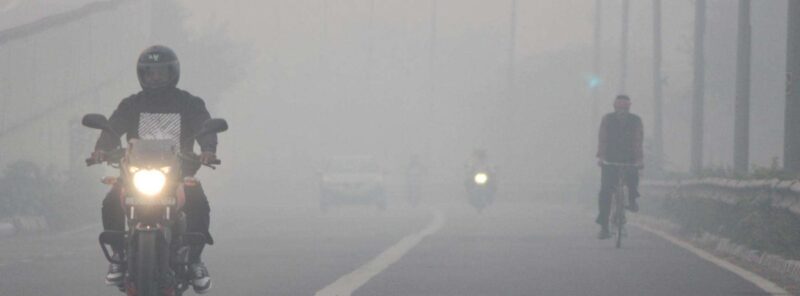Air pollution is responsible for more than 6 million deaths each year, according to a 2017 study in the Lancet, making it the single largest environmental health risk globally. According to the World Health Organization, nine out of 10 people around the world breathe unhealthy air. And as the world continues to grapple with the coronavirus pandemic, recent research has linked air pollution with 15% of global deaths from Covid-19. Yet there has been very little sustained progress in dealing with this silent killer in the world’s most polluted urban centers.
To make daily decisions and hold governments and polluters to account, people need accurate, trusted, localized information on air quality, but air quality data can be complex and confusing. Furthermore, the news and social media contribute to a hazy public perception of air pollution, as shown by a 2019 study in South and Southeast Asia by Vital Strategies.
With the support of the U.S. Agency for International Development (USAID), Internews’ Earth Journalism Network (EJN) will embark on a new flagship program, Clean Air Catalyst, led by the World Resources Institute (WRI) and Environmental Defense Fund (EDF) to accelerate clean air solutions in low- and middle-income countries.
Clean Air Catalyst will work over five years with communities in three pilot locations in India, Indonesia and Ethiopia to identify and raise awareness of local pollution sources and build focused coalitions to deliver interventions that lead to sustained progress on cleaner, healthier air.
The primary sources of air pollution vary from city to city, but most cities in developing countries lack information on what’s driving it. This lack of data is compounded by misinformation spread by groups seeking to shift blame to avoid the costs of emissions reductions. The media plays a crucial role in building greater public awareness of pollution’s sources and helping communities understand and build support for solutions that will address the main drivers of pollution in their region.
As part of this project, EJN will assess the information ecosystems around air pollution in the communities where we’ll work, identify and address common misperceptions through rumor tracking and provide story grants and mentorship to local journalists. Those journalists will be trained to use emissions and air quality data to report on air pollution. They’ll also learn ways to make the causes of pollution more visible and personal and to elevate the voices of those most affected by it.
The project will enhance collaboration between the media, scientists and health experts so they may delve into the root causes of air pollution and develop sustained reporting that will build a shared understanding of where the pollution that affects each city comes from.
The project has several new and innovative features:
- Source Awareness: It will use participatory science, structured media engagement and assess public perceptions to build a shared understanding of the pollution sources that affect communities in each city.
- Sabotage of Harms (Root Cause Analysis): It will expand the scope of air quality action beyond the “end of the tailpipe/top of the smokestack” regulatory solutions by identifying 3-5 activities that drive emissions in the most polluting sector(s) in each pilot region.
- Focused Coalition Building: It will select one high-impact intervention from the sabotage of harms assessment and build a coalition of public- and private-sector partners – including the formation of new sustainable funding vehicles and governance mechanisms for coordination – to reduce emissions from a key source of pollution.
- Cross-Sectoral Global Consortium: Our unique coalition of leading air quality, environment, public health, energy, governance, and communication experts will work to break down sectoral silos to deliver credible and comprehensive solutions.
Through these pilots, EJN and the other research, health and environmental organizations in the consortium will create a practical, field-tested playbook for tailored solutions that cut air pollution and improve human health in developing cities around the world.

(Banner photo: Air pollution in New Delhi, India. Credit: Soumya Sarkar, Zofeen T. Ebrahim, Ramesh Bhushal/EJN)
